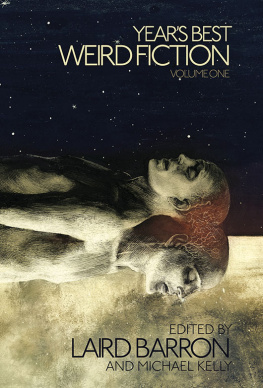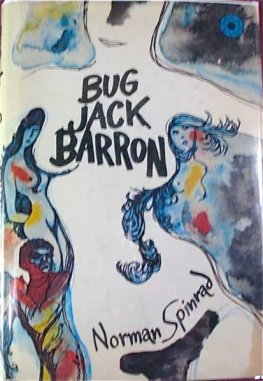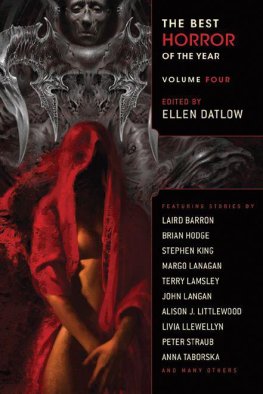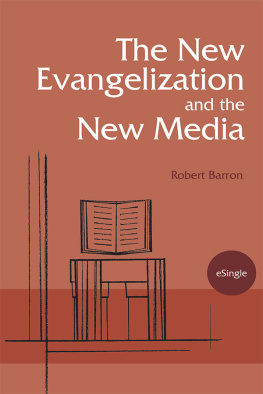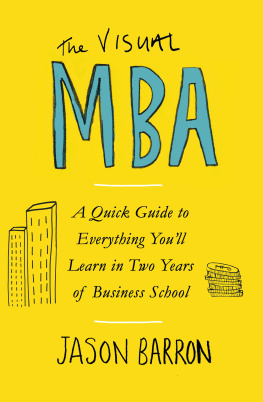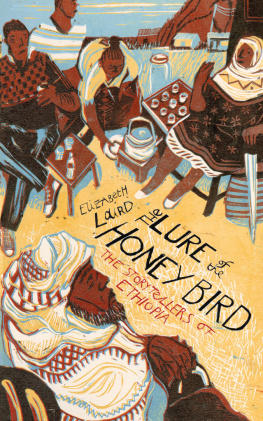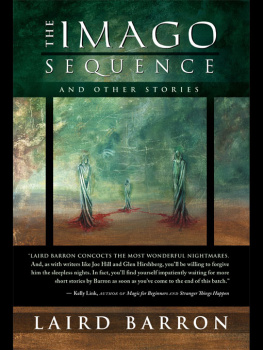Michael Kelly
Michael Kelly is the editor of Shadows & Tall Trees. His fiction has appeared in Black Static, The Mammoth Book of Best New Horror, Weird Fiction Review, and others. As editor hes been a finalist for the Shirley Jackson Award, and the British Fantasy Society Award.
W elcome to the inaugural volume of the Years Best Weird Fiction.
What is weird fiction?
The simple answer is that it is speculative in nature, chiefly derived from pulp fiction in the early 20 th century, whose remit includes ghost stories, the strange and macabre, the supernatural, fantasy, myth, philosophical ontology, ambiguity, and featuring a helping of the outr. Weird fiction, at its best, is an intersecting of themes and ideas that explore and subvert the laws of Nature. It counts among its proponents older and newer writers alike: Robert Aickman, Laird Barron, Charles Beaumont, Ambrose Bierce, Octavia Butler, Ray Bradbury, Angela Carter, Neil Gaiman, Shirley Jackson, Kathe Koja, John Langan, Thomas Ligotti, Kelly Link, H. P. Lovecraft, and many others.
Weird fiction is not specifically horror or fantasy. And weird fiction is not new. It has always been present. Thats because it isnt a genre, as such. This makes the prospect of defining weird fiction difficult, and perhaps ill advised. Weird fiction is a mode of literature that is present in other genres. Weird tales were penned long before publishers codified and attached genre labels to fiction. You can find weird fiction in literary journals, in horror magazines, fantasy and science fiction periodicals, and various other genre and non-genre journals and anthologies that are welcoming to speculative fiction of the fantastique.
Theres been renewed interest in weird fiction, spurred by the likes of Jeffrey Ford, Elizabeth Hand, Margo Lanagan, China Mieville, Reggie Oliver, Jeff VanderMeer, and Kaaron Warren, (to name a few), and by the publication of anthologies such as American Fantastic Tales, Black Water, Black Wings, The New Weird, The Uncanny, Strange Tales; and journals such as Black Static, ChiZine, Shadows & Tall Trees, and Weird Fiction Review.
Weird fiction is here to stay. Once the purview of esoteric readers, it is enjoying wider popularity. Throughout its storied history there has not been a dedicated volume of the years best weird writing. There are a host of authors penning weird and strange tales that defy easy categorization. Tales that slip through genre cracks. A yearly anthology of the best of these writings was, in my estimation, long overdue.
Each volume of the Years Best Weird Fiction will feature a different guest editor. This, I believe, gives the series a fresh and unique quality, as each editor will leave their indelible aesthetic on the book. After all, the weird, perhaps more so than any other mode of literature, invites fresh perspectives and is open to multiple interpretations. Whats weird for you isnt necessarily whats weird for me. Thus, the possibilities are exciting, and each volume will ring with a distinct voice.
My short list for who I wanted to edit the inaugural volume of the Years Best Weird Fiction was really short. It had one name: Laird Barron. Barron is, in my estimation, (along with Caitlin R. Kiernan, and Ramsey Campbell), a current master of the weird mode. And hes a student of the weird. His knowledge of both the past masters and the current up-and-comers made him the ideal candidate to helm this first volume. He is a sharp and inimitable critic, and a unique and powerful writer and editor. So, I was extremely pleased that Laird agreed to edit the inaugural edition. As you will soon note, it is a remarkably diverse, eclectic, and potent collection of tales.
Laird, it must be said, is a true professional. I couldnt have asked for a more gracious and patient co-editor. It was a joy working with him to shape this volume. I owe him a debt of thanks.
It should be noted that I had initially planned on writing a summation of the year in weird fiction. While I did read upwards of 3,000 stories for this volume, there were several publishers who, despite several entreaties from me, did not respond to requests for material for consideration in the book. Thus, I felt a summation of the year, as lofty and admirable as that would have been, would feel incomplete.
I sincerely hope that this inaugural edition is successful enough to warrant a second and subsequent volumes. Already, even before publication, we are getting push back from buyers who are ill-informed about the long and fine tradition of the weird tale. We are, dear reader, at your mercy. Im confident you will enjoy this initial offering, and hope you will consider it an annual must buy.
Finally, thank you to all the backers of the crowd-sourcing campaign. Truly, we could not have done this without you. You now hold the fruits of our labor in your hands. You did good! Thank you!
So, without further ado... welcome to the weird!
Michael Kelly
Pickering, Canada
June 23, 2014
Laird Barron
Laird Barronis the author of several books, including The Croning, Occultation, and The Beautiful Thing That Awaits Us All. His work has also appeared in many magazines and anthologies. An expatriate Alaskan, Barron currently resides in Upstate New York.
M orbid and fatally-curious primates that we are, we are for the weird.
Telling ghost stories was popular during my youth in Alaska. Whenever my family and friends gathered around the campfire, and as the shadows lengthened and the hour grew late, inevitably someone would begin a round robin tournament of eerie tales. My grandmother occasionally spoke about a fateful Thanksgiving, back in the late 1940s. While the assembled relatives kibitzed, she went down into the cellar to fetch a jar of preserves. The cellar wasnt much more than a pit reinforced by rotting timbers. Raw earth lay exposed where Grandpa hadnt gotten around to finishing the retaining wall. That hole in the ground was always cold, always damp, and dark, utterly dark but for the light from the kitchen that cast a feeble glow on the moldering shelves.
As the story goes, Grandma reached for a jar and at the moment the cellar door slammed shut. She started up the steps, feeling her way in the pitch blackness. A hand, cold as meat from the locker, clamped around her ankle. She began screaming. Of course, within moments, family members flung open the door and came to her aid. As the kitchen entrance was the only way into or out of the cellar, no one took her story seriously. They attributed her claims of being accosted by a lurker beneath the stairs to panic and claustrophobia. Within a few minutes her ankle swelled and bruised into a recognizable pattern of black and blue fingerprints. Cue the Theremin.

